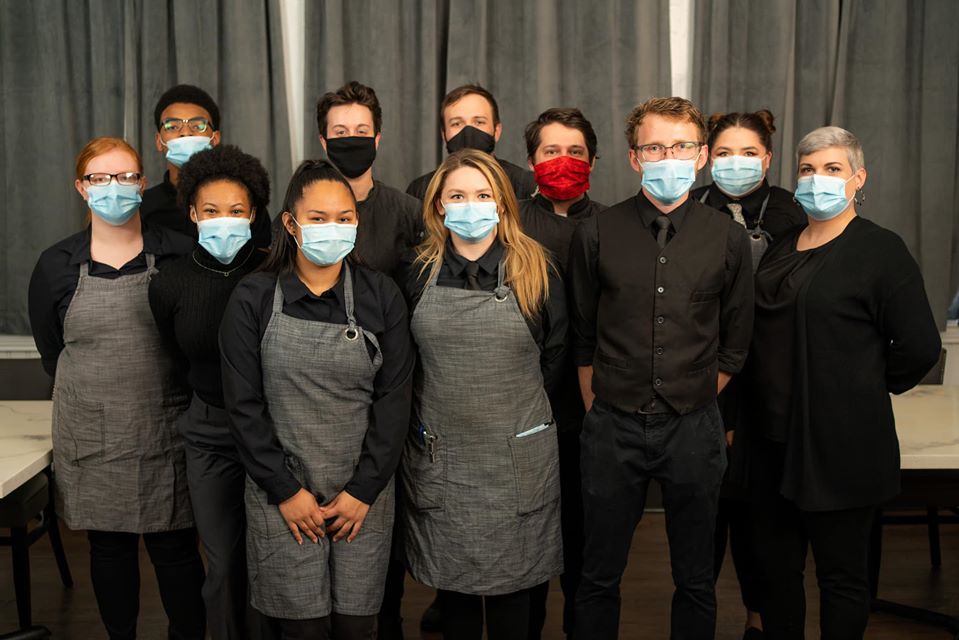It was two months ago, Monday March 16, that the order came restricting Kentucky restaurants to carry-out, delivery, and drive-through service. This weekend they’ll reopen with limited indoor and outdoor seating and a thorough list of guidelines designed to protect the lives and health of workers and customers.
The way Metro restaurants transformed their service models and mobilized entirely new methods over the last couple of months has been inspiring to watch – especially for those of us who focus our attention on the local independent restaurants, many of whom have proven to be far more imaginative, resilient, and creative than their corporate competitors.
In some ways this is not surprising. Independent restaurateurs are – as the adjective implies – independent folks. Many of them have worked their way into the ownership ranks, and there are few indie restaurateurs who don’t have plenty of experience washing pots and pans, sweeping floors, and doing all the behind-the-scenes work that is, by design, invisible to a diner.
Diners, on the other hand, seem to be less resilient. That’s because one thing this crisis has clarified is that “dining out” is not just about eating.
From start to finish, dining out is always an act of social performance.
What type of restaurant we choose. How we dress. Our menu selections. Our scrutiny of a wine list. Our interactions with hosts and servers; clerks at the counter or the drive-through window. How we tip. How we describe and praise and critique and compare and photograph our menu choices with those of our table-mates. All of the ephemeral emotional and psychological wins and losses that come from choosing (or not) the exact right dish or wine or beer.
If you could somehow quantify all the things happening around a dining table – whether you’re dining alone or with a party of ten – you’d find that food is never the most important thing at the table.
It’s the act of being in society that matters.
It is true, as many wits have smartly observed, that one cannot eat while wearing a mask. It is also true that these days you can pick up at curbside (or have delivered to your porch) nearly anything in the city that you could possibly want. And in the comfort of your home, an isolated picnic table or tailgate, you can consume that food with your partner or partners in quarantine.
That part of the dining experience is easy.
But is that really the part of dining that you miss?
Maybe not. Maybe what you miss is the ritual dining performance, the friendly greeting from the owner, the summoning of service, the sharing of dishes, the moralizing over whether to have dessert, the splitting of the tab, the largesse of the gratuity, the lingering before abandoning the table.
Those social rituals can’t easily be carried out or delivered — though I have developed a sincere appreciation for the unexpectedly flamboyant curbside personalities of the fast-moving curb-folks at Joy Luck, The Fish House, The Post, Time 4 Thai, and other places around town.
But even if those social rituals aren’t portable, the food itself definitely is. Excellent food delivers quite well.
And the pleasures of society are easily portable as well – especially now that spring is upon us. Carry-out conversations are easy enough, if people are disciplined and considerate and sit ten or fifteen feet apart outdoors on a fine spring afternoon.
So to be clear, the return of table seating in Indiana and Kentucky restaurants doesn’t restore our option to eat the restaurant meals we’ve been picking up or having delivered the last couple of months. Nor does it restore our option to prudently interact with our friends and families while following social distancing guidelines.
What the return of table seating restores is our ability to participate in a very specific set of dining rituals that will now and for some time look and feel radically different from the way they looked before March 16. If you decided to pioneer these rituals – which will now be conducted by folks wearing masks and gloves – be prepared for a new experience. And be prepared for it to evolve over the coming months.
Bon appetit.
—
Marty Rosen, Food & Dining Magazine’s Editor-in-Chief, has been covering food, dining, performing arts, and culture in Louisville for a quarter-century, and has been a contributor to F&D since the first issue. Marty served as dining critic for LEO Weekly (2003—2006) and The Courier-Journal (2006-2014). In addition, he has written for Louisville Magazine, the Kentucky Department of Tourism, The Voice-Tribune, and other publications.
Cover photo credit: Brooklyn and The Butcher, New Albany
























